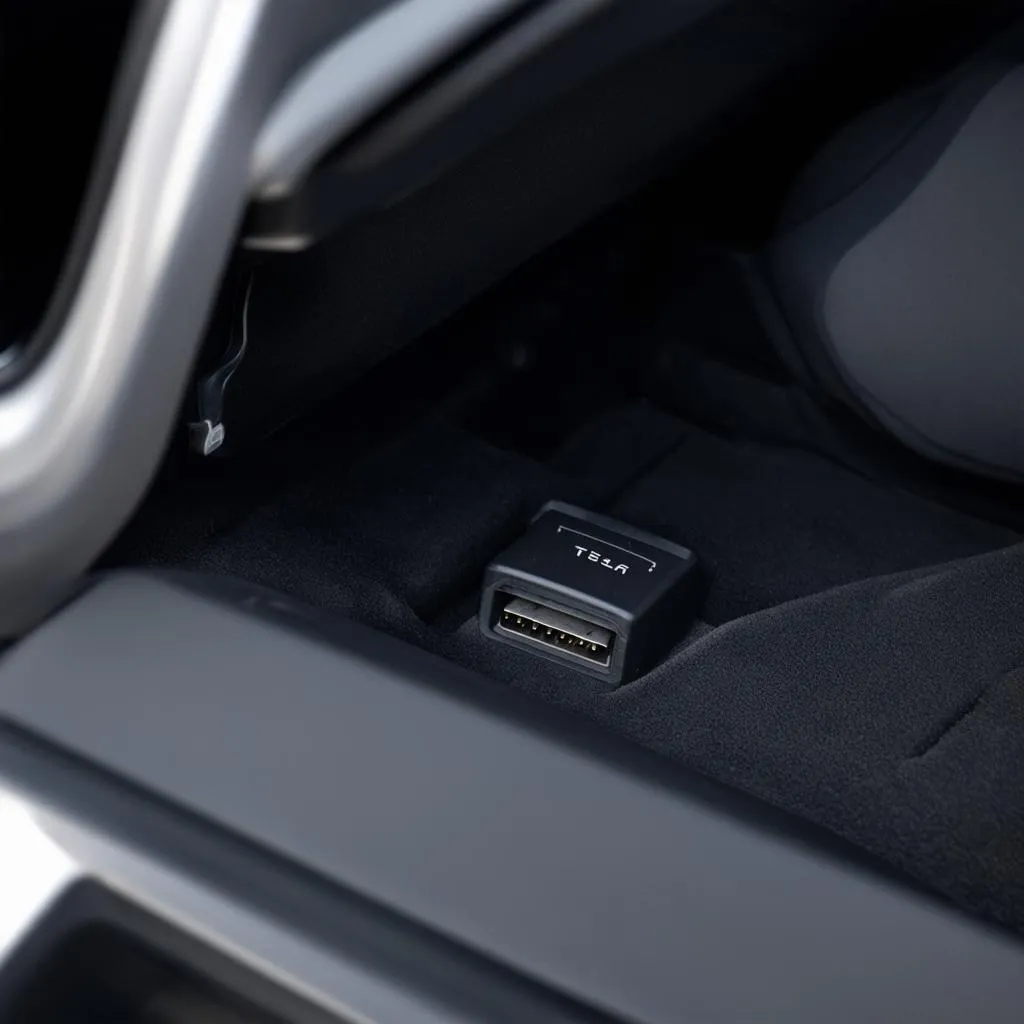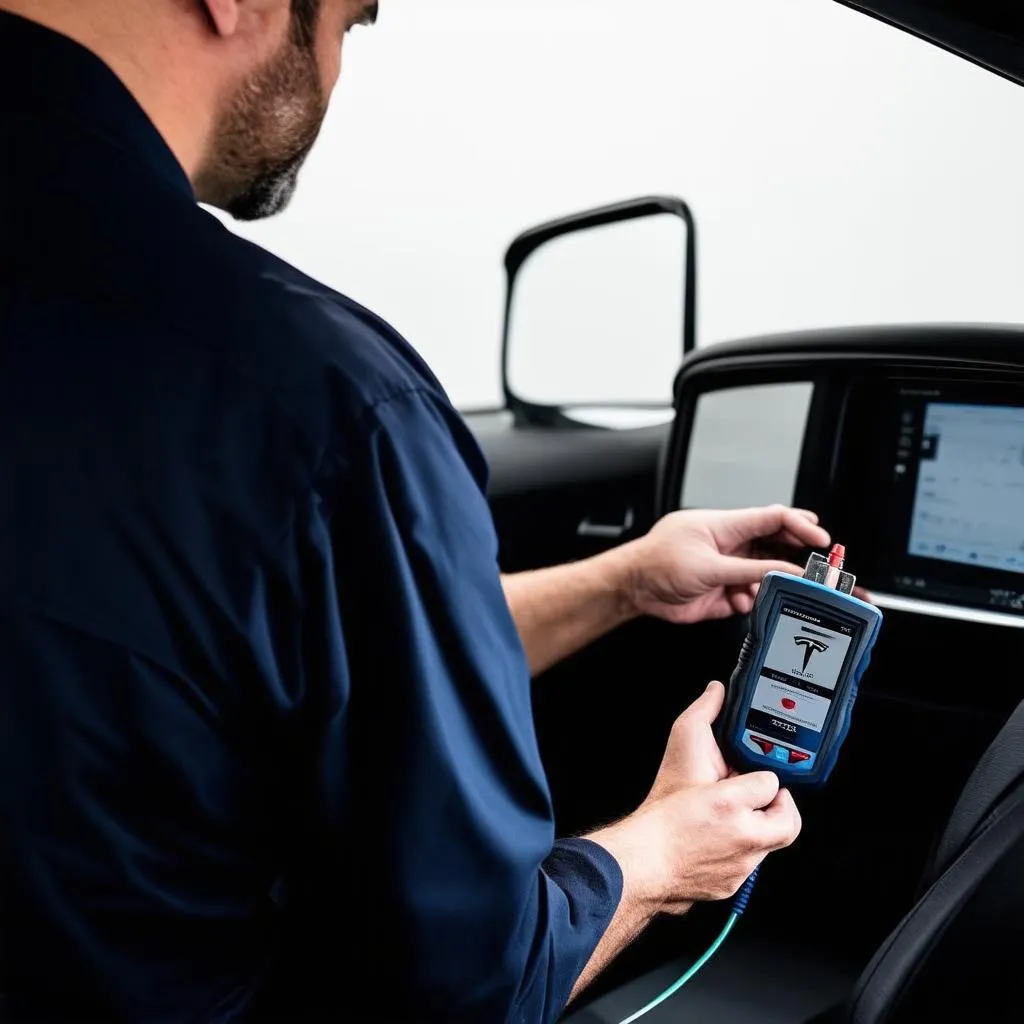“If you can’t fix it with duct tape, you’re not using enough of it.” This saying, while funny, doesn’t apply to Tesla vehicles. You can’t just slap some duct tape on your Tesla’s electrical system and expect it to work. That’s why understanding the OBD port is crucial for any Tesla owner.
What Does it Mean?
The term “OBD” stands for “On-Board Diagnostics.” It’s a standardized system used in modern cars to allow technicians to diagnose and troubleshoot issues. Think of it like a little window into the car’s inner workings. It’s the interface between your car and a diagnostic tool.
Why is it Important?
The OBD port is essential for several reasons:
- Troubleshooting: When your Tesla is acting up, a mechanic can use a diagnostic tool connected to the OBD port to identify the problem.
- Performance Monitoring: You can use it to monitor your car’s performance.
- Emissions Testing: In many areas, your car needs to pass emissions testing to ensure it’s not polluting too much. The OBD port is used to do that.
- Customizing: Some people use OBD ports to modify their car’s performance or even add features.
Does Tesla Have an OBD Port?
The short answer is yes, Tesla vehicles do have an OBD port. But it’s not as simple as that.
Where is the OBD Port Located?
The OBD port on a Tesla is located under the driver’s seat, just behind the front passenger seat, and is typically covered by a plastic flap.
The Tesla Exception
While Tesla vehicles have an OBD port, accessing it is a bit different from other cars.
- Proprietary System: Tesla has its own proprietary system, which makes it difficult for traditional diagnostic tools to read it.
- Software Updates: Tesla vehicles often receive software updates that can affect how the OBD port interacts with diagnostic tools.
- Communication Protocol: Tesla uses a different communication protocol called CAN bus, which many diagnostic tools don’t support.
In simpler terms, it’s not a standard OBD port that you can just plug any old tool into. It’s specifically designed for Tesla vehicles.
What to do?
If you need to access your Tesla’s OBD port for any reason, you have a few options:
- Tesla Service Center: The best bet is to visit a Tesla service center. They have the specialized tools and knowledge to handle your Tesla’s diagnostic needs.
- Specialized Diagnostic Tools: Some specialized diagnostic tools, such as Carista or OBDeleven, are specifically designed to work with Teslas.
- Tesla Mobile Service: Tesla offers mobile service in many areas, allowing a technician to come to your location.
 Tesla OBD port
Tesla OBD port
Frequently Asked Questions
1. Can I use a standard OBD scanner on my Tesla?
No, you can’t use a standard OBD scanner on a Tesla. Tesla’s system is proprietary and requires a specialized tool.
2. What are some specialized diagnostic tools that work with Teslas?
Some specialized diagnostic tools compatible with Teslas include Carista, OBDeleven, and the Tesla Service Center’s diagnostic equipment.
3. What can I do if I’m having trouble with my Tesla’s OBD port?
If you’re having trouble with your Tesla’s OBD port, contact a Tesla service center or a specialized diagnostic tool provider for assistance.
What is the Future of Tesla OBD Ports?
As Tesla continues to develop and evolve its vehicles, it’s possible that the OBD port will become more accessible in the future.
A more open and accessible OBD port could allow for greater customization and troubleshooting options for Tesla owners.
Contact Us!
If you are struggling to connect a diagnostic tool to your Tesla or need help diagnosing an issue, please contact us via WhatsApp at +84767531508. Our team of specialists can assist you 24/7 with any car diagnostics needs.
We’re here to help you keep your Tesla running smoothly!
 Tesla Car Diagnostics
Tesla Car Diagnostics
Related Articles
- Does the Tesla 3 Have an OBD Slot?
- Does Tesla Have OBD Link?
- Does Tesla Have a OBD Port?
- iCar Pro OBD
- Car OBD Port Not Working
 Tesla Service Center
Tesla Service Center
Please share your thoughts and experiences with Tesla’s OBD port in the comments below!